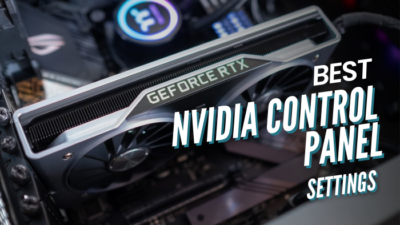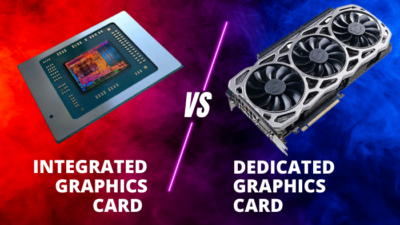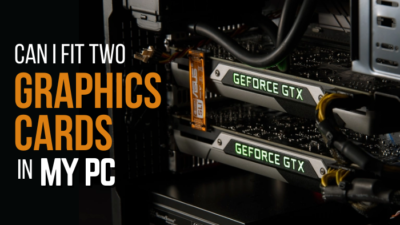Since RTX 30 & 40 series Graphics Cards are the latest release, those come with PCIe 4.0 support. Furthermore, we already have PCIe 5.0 on newer chipset motherboards in the mainstream market.
That brings a question: Is PCIe 3.0 no longer supporting new RTX 30 and 40 series graphics cards?
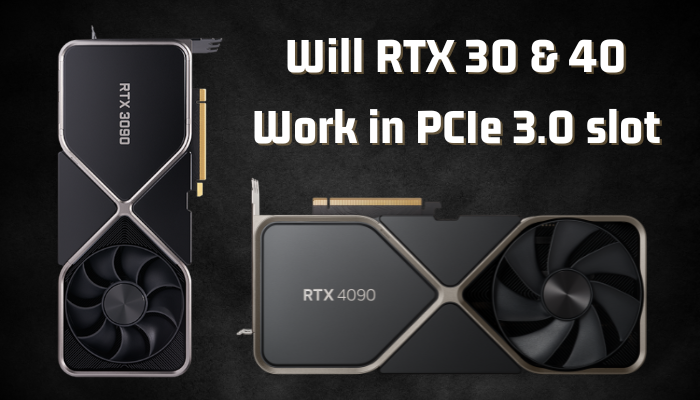
The answer is Yes; PCIe 3.0 still supports the latest RTX graphics cards, even if the GPUs have native PCIe 4.0 support.
Still, there should be some flaws and drawbacks that I’ll share with my experience.
Can a PCIe 3.0 Slot Run RTX 30 & 40 Series GPUs?
As mentioned, a PCIe 3.0 slot can run RTX 30 & 40 series Graphics Cards without any fetal issues. My RTX 4090 didn’t come up with any problems with the older Z390 chipset motherboard with PCIe 3.0 slot.
Although I expected that my PC might not start after installing the new graphics card, it didn’t blink once.
In fact, the high-end RTX 4090 performs pretty smoothly and fast in my day-to-day task. I’ve tried editing 4K videos, rendering highly dense polygon 3D scenes, multi-layer high-res image processing, and so on to impose a heavy workload.
Surprisingly, my tests never showed a disheartening result compared to the performance of my friend’s rig with a Z690 chipset motherboard paired with an exact RTX 4090 GPU model. Of course, that friend was flexing with the latest chipset mobo with native PCIe 4.0 support.
But things didn’t go according to his plan. A higher version of PCIe will inevitably squeeze out better performance from a PCIe 4.0 Graphics Card, but does such a performance boost actually matter in real-life use cases?
To find the answer, my friend and I have run several synthetic benchmarks and games on both rigs simultaneously. The results are evaluated in the further sections below.
Does RTX 30 & 40 Cause Performance Drop on PCIe 3.0 lane?
The assumption that users often make about the ‘limited performance’ of an RTX 40 or 30 card on a backdated version PCIe slot is somehow obvious. But the difference between the performance of 3.0 & 4.0 is not as much as people would expect. Even I was shocked by the result.
Since my friend & I own the identical GPU一 RTX 4090, we usually compare the difference with our different chipsets.
Let me share a glimpse of the configuration of both rigs. My PC has an Intel® Core™ i7-9700KF (Coffee Lake) with a Z390 chipset motherboard. The system has 16 Gigs of DDR 4 RAM of CL16 & NVMe storage.
On the other hand, my friend’s rig has almost top-of-line components like Raptor Lake 12700KF with Z690 motherboard & 16 Gigs DDR 5 system memory.
We ran several synthetic benchmarks simultaneously to determine the performance difference between our PCs with the same Graphics Card.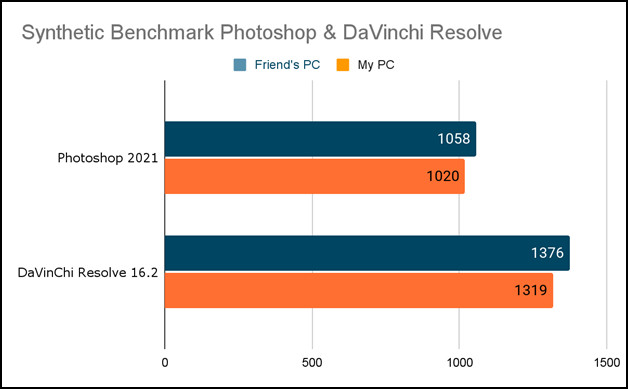
As you can see in the chart, Both PCs are performing pretty much similarly. The lacking is roughly less than 5%. The latest one may have improvements because of the latest chipset and processor.
Then Again, we tested the 3D performance of both PC with Blender. We rendered the Gooseberry & BMW to check how long those take to complete.
Unsurprisingly, the PC with the latest parts took 2:41 minutes to complete the gooseberry render, and mine took 2:50 minutes. Additionally, the BMW render only required 19 sec on both PCs.
To test the RTX & CUDA core performance, we ran V-RAY, and here is the result below: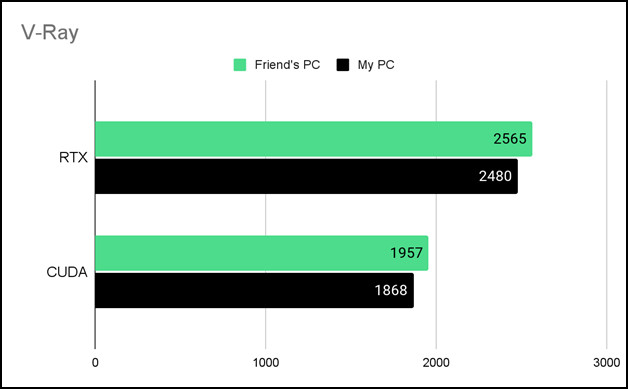
As you can see, there is a slightly better performance than the PCIe 3.0, but is it worth spending so much to achieve the little performance?
You might be surprised how a spec sheet shows PCIe performance over the generation. Take a quick look at the data below I took from Wikipedia.
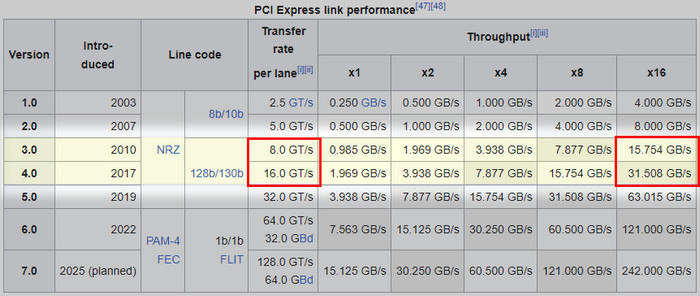
The table shows that every version upgrade of PCI express brought twice the wider bandwidth and throughput rate. But in real-life experience, it reveals a different story.
So, we decided to jump on the gaming section to redetermine the PCIe 3.0 and PCIe 4,0 performance.
Does PCIe 3.0 Affect Gaming FPS Compare to PCIe 4.0?
Alongside the synthetic benchmark result, the game FPS is a better option for evaluating PC performance. From our perspective, gaming was the key point where the competition brought satisfaction.
So we’ve played some Triple-A games to judge the real-life use case because our main concern was gaming.
For the test purpose, we played Shadow of the Tomb Raider, Forza Horizon 4, and Red Dead Redemption 2 on high preset in 4K resolution with the latest graphics card, RTX 4090.
To remind you about the PCs we are using, mine is a bit old with a Z390 chipset with 9th gen i7 9700KF that has PCIe 3.0. And the other rig has Z690 with the latest Raptor Lake i7 12700KF processor. Both have 16 Gigs of RAM, and an identical RTX 4090 GPU is used.
Since I was more experienced with PC components, I taught him how to connect GPU to the motherboard, and then I discovered he was using the wrong M.2 slot for his primary NVMe SSD.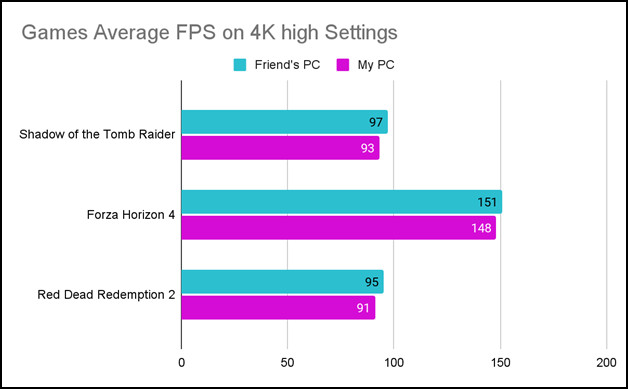
What do you think of the result? Very little improvement, according to the spec sheet throughput from Wikipedia. Ain’t it?
My friend spent a whole lot of money to get the most out of the absolute beast RTX 4090 and ended up with such a tiny improvement. He was banging his head on the wall after seeing this.
But the story took a turn when we tested our favorite tactical shooting game CS-GO. The result has stabbed me while I had a boastful mind with the previous results.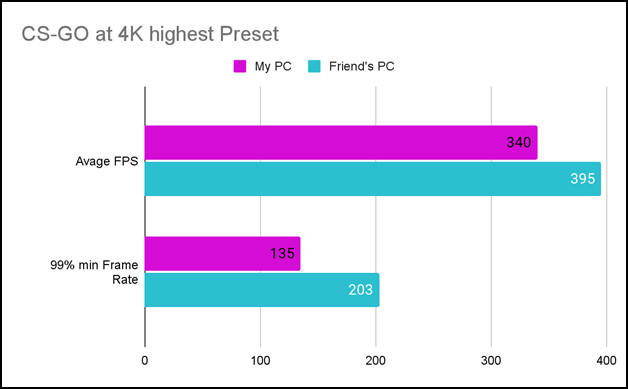
Well, that’s how PCIe 4.0 should drop nukes into the user’s mind. It literally outperforms PCIe 3.0 with the CS-GO test.
As you can see, the 99% min frame rate is almost double & the average FPS is significantly high.
Cheers to the optimization of CS-GO.
After seeing CS-GO’s result, I genuinely believe every other game could perform much better with PCIe 4.0 if the games are well optimized. Plus, the true potential of PCIe isn’t only for graphics.
Data transfer rate via M.2 port with the fastest PCIe SSDs and other PCIe-connected components is directly responsible for performance extension. In fact, nearly the whole motherboard intercommunicates through the PCIe.
As a result, PCIe 3.0 isn’t trash yet. PCIe 3.0 is still a good option for running RTX 3060, RTX 2070, RTX 3080, RTX 3090, and similar spec AMD graphics cards.
FAQs
Is PCIe 5.0 available?
Yes, PCIe 5.0 is already available with the latest chipset-based motherboards. But those are pretty expensive.
Do I need PCIe 5 for GPU?
No, PCIe 5 is not mandatory for the graphics cards yet. You can fire up a top-of-the-line GPU RTX 4090 in older PCIe 4.0 & 3.0.
Is NVMe better than SSD?
Undoubtedly, NVMe uses the fastest PCIe lane, which offers a huge bandwidth. Rather, the SATA SSDs are only capable of transferring around 500mbps of bandwidth.
How many PCIe lanes does an SSD use?
An NVMe SSD can use four lanes of PCIe through the M.2 port of the motherboard.
How many PCIe lanes does a GPU use?
A graphics card uses an x16-pin PCIe slot; whether it’s a PCIe 3.0 or 4.0, it can use up to 16 lanes.
Final Words
Since PCIe 3.0, it’s been revolutionized for a long time. PCIe 4.0 is also developing, though 5.0 is already on board.
Whether you’re using a PCIe 3.0 slot for a GPU that supports PCIe 4.0 Graphics Card, it’s not a wasteful choice in real-life use. It’s able to run an absolute beast like RTX 4090, let alone the usual ones.
Let us know whether you’ll use RTX 30 & 40 cards in your old PCIe 3.0 system and upgrade later.

